DIY Drip Irrigation Pumpkins Baskets – sounds like a mouthful, right? But trust me, it’s a game-changer for your garden, especially if you’re dreaming of plump, juicy pumpkins bursting with flavor! Forget spending hours lugging watering cans around; we’re about to unlock a simple, cost-effective way to keep your pumpkin patch thriving.
The idea of using ingenious irrigation methods isn’t new. Throughout history, cultures have devised clever ways to water their crops, from ancient Egyptian shadufs to intricate aqueducts. Now, we’re bringing that ingenuity to your backyard with a modern twist: repurposing readily available materials to create a self-watering system perfect for pumpkins (and other thirsty plants!).
Why do you need this DIY Drip Irrigation Pumpkins Baskets trick? Well, pumpkins are notoriously thirsty plants, and consistent watering is key to their success. But let’s be honest, life gets busy! This DIY project not only saves you time and effort but also ensures your pumpkins receive the precise amount of water they need, right at the root. No more guesswork, no more underwatering, and definitely no more wasted water. Plus, it’s a fantastic way to recycle old baskets and give them a new purpose. Let’s dive in and create a thriving pumpkin patch together!
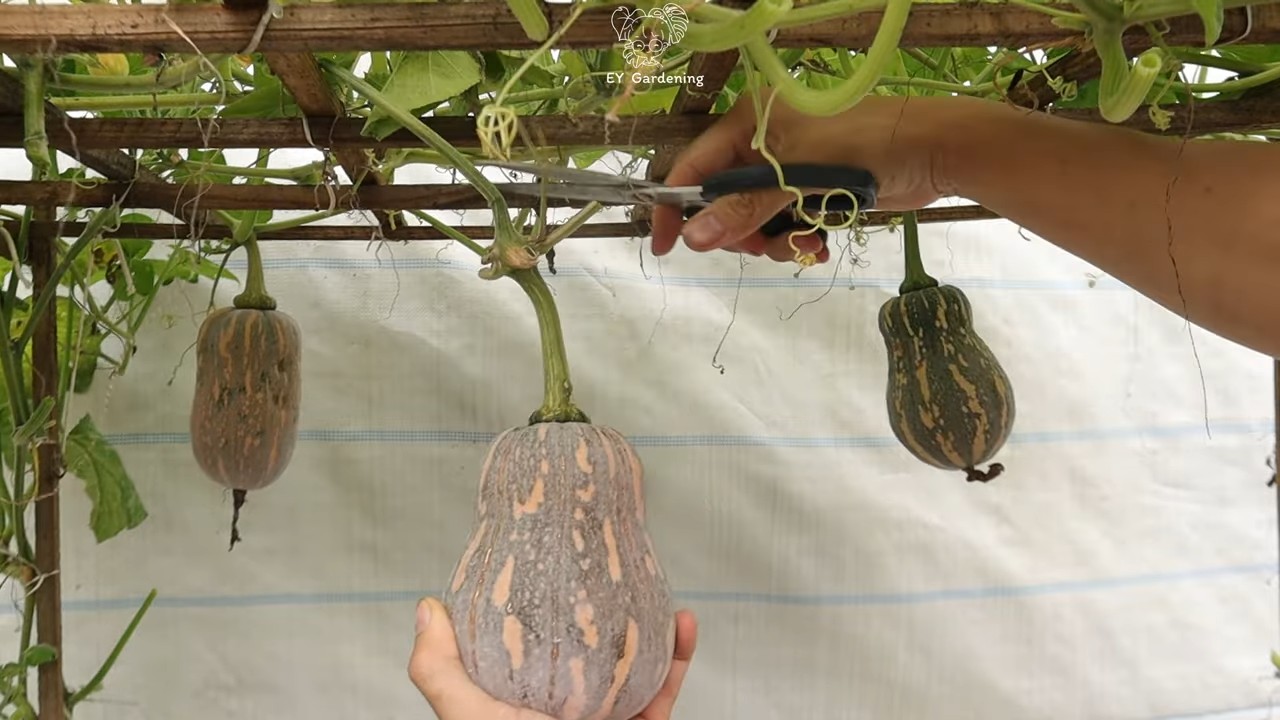
DIY Drip Irrigation Pumpkin Baskets: A Watering Solution with a Spooky Twist!
Okay, friends, let’s face it: watering plants, especially during the hot summer months, can be a real chore. And if you’re like me, you’re always looking for ways to make gardening easier and more efficient. That’s where this DIY drip irrigation pumpkin basket project comes in! It’s a fun, slightly spooky (in a good way!), and incredibly effective way to keep your plants happy and hydrated. Plus, it adds a unique decorative touch to your garden.
This project combines the practicality of drip irrigation with the charm of repurposed pumpkin baskets. We’re essentially creating self-watering planters that slowly release water directly to the roots of your plants, minimizing water waste and maximizing plant health. Ready to get started? Let’s dive in!
Materials You’ll Need
Before we begin, let’s gather all the necessary materials. This will make the process smoother and prevent any frustrating mid-project runs to the hardware store.
* **Pumpkin Baskets:** These are the stars of the show! You can find these at craft stores, garden centers, or even online. Look for sturdy baskets made of natural materials like willow or rattan. The size will depend on the size of the plants you intend to grow. I recommend having at least 2-3 baskets for a good start.
* **Plastic Liners:** These will hold the water and prevent it from leaking out of the basket. Heavy-duty garbage bags or pond liners work great. Make sure they’re large enough to completely line the inside of your pumpkin baskets.
* **Drip Irrigation Tubing:** This is the key to the drip irrigation system. You’ll need enough tubing to run from your water source to each pumpkin basket. I prefer using ¼-inch tubing because it’s flexible and easy to work with.
* **Drip Irrigation Emitters:** These small devices regulate the flow of water from the tubing to the plants. Choose emitters with a flow rate that matches your plants’ watering needs. I usually go for 1-gallon-per-hour emitters for most of my vegetables and flowers.
* **Drip Irrigation Connectors:** You’ll need connectors to attach the tubing to your water source and to the emitters. Look for T-connectors, elbow connectors, and end caps.
* **Water Source:** This could be a garden hose, a rain barrel, or even a large bucket. If you’re using a garden hose, you’ll need a backflow preventer to protect your water supply.
* **Potting Soil:** Choose a high-quality potting soil that drains well. I like to use a mix of peat moss, perlite, and vermiculite.
* **Gravel or Rocks:** This will create a drainage layer at the bottom of the basket.
* **Scissors or Utility Knife:** For cutting the plastic liner and drip irrigation tubing.
* **Drill (Optional):** If your pumpkin baskets don’t have drainage holes, you may need to drill some.
* **Gloves:** To protect your hands.
* **Measuring Tape:** To measure the tubing and liner.
Preparing the Pumpkin Baskets
This is where we get our hands dirty (in a good way!). We need to prep the baskets to ensure they can hold water and support our plants.
1. Clean the Baskets: Start by cleaning the pumpkin baskets with a brush to remove any dirt or debris. This will help the plastic liner adhere better.
2. Drill Drainage Holes (If Necessary): If your baskets don’t already have drainage holes, drill a few in the bottom. This will prevent the soil from becoming waterlogged. I usually drill about 4-5 holes, each about ½ inch in diameter.
3. Line the Baskets: Now, carefully line the inside of each basket with the plastic liner. Make sure the liner completely covers the inside of the basket, including the sides and bottom. Leave some extra liner hanging over the edge of the basket.
4. Secure the Liner: Fold the excess liner over the edge of the basket and secure it with tape or staples. This will prevent the liner from slipping down into the basket. You can also trim the excess liner with scissors, leaving about an inch or two to fold over.
5. Add Drainage Layer: Pour a layer of gravel or rocks into the bottom of each basket. This will improve drainage and prevent the soil from becoming waterlogged. I usually add about 2-3 inches of gravel.
Setting Up the Drip Irrigation System
This is the heart of the project! We’re going to create a simple drip irrigation system that will deliver water directly to the roots of your plants.
1. Measure and Cut the Tubing: Measure the distance from your water source to each pumpkin basket. Cut the drip irrigation tubing to the appropriate length, leaving some extra slack. It’s always better to have too much tubing than not enough!
2. Connect the Tubing to the Water Source: Attach one end of the tubing to your water source using a connector. If you’re using a garden hose, you’ll need a hose adapter. Make sure the connection is secure to prevent leaks.
3. Run the Tubing to the Baskets: Run the tubing to each pumpkin basket, positioning it near the center of the basket.
4. Install the Emitters: At each pumpkin basket, cut the tubing and insert a T-connector. Attach a short length of tubing to the T-connector and then attach an emitter to the end of the tubing. Position the emitter near the base of the plant.
5. Secure the Tubing: Use stakes or clips to secure the tubing to the ground. This will prevent it from being accidentally moved or damaged.
6. Test the System: Turn on the water and check for leaks. Adjust the emitters as needed to ensure that each plant is receiving the appropriate amount of water.
Planting Your Plants
Now for the fun part – planting! Choose plants that are well-suited to container gardening and that will thrive in the conditions of your garden.
1. Fill the Baskets with Potting Soil: Fill each pumpkin basket with potting soil, leaving a few inches of space at the top.
2. Plant Your Plants: Carefully remove your plants from their containers and plant them in the baskets. Space the plants according to their mature size.
3. Water Thoroughly: Water the plants thoroughly after planting. This will help them settle into their new home.
4. Add Mulch (Optional): Add a layer of mulch around the plants to help retain moisture and suppress weeds. I like to use straw or wood chips.
Maintenance and Care
Once your drip irrigation pumpkin baskets are set up, they require minimal maintenance. However, there are a few things you can do to keep them looking their best and functioning properly.
1. Check the Water Level: Regularly check the water level in the baskets. The soil should be consistently moist, but not waterlogged.
2. Adjust the Emitters: Adjust the emitters as needed to ensure that each plant is receiving the appropriate amount of water. You may need to increase the flow rate during hot weather or decrease it during cooler weather.
3. Fertilize Regularly: Fertilize your plants regularly with a balanced fertilizer. Follow the instructions on the fertilizer package.
4. Prune as Needed: Prune your plants as needed to remove dead or damaged leaves and stems.
5. Clean the Emitters: Occasionally, the emitters may become clogged with mineral deposits. Clean them with a small brush or needle.
6. Inspect the Tubing: Regularly inspect the tubing for leaks or damage. Repair or replace any damaged tubing.
7. Winterize the System: In cold climates, you’ll need to winterize the drip irrigation system to prevent it from freezing. Disconnect the tubing from the water source and drain all the water from the system. Store the tubing and emitters in a dry place.
Troubleshooting
Even with the best planning, things can sometimes go wrong. Here are a few common problems and how to fix them:
* Leaks: If you notice leaks in the tubing or connectors, tighten the connections or replace the damaged parts.
* Clogged Emitters: If the emitters are clogged, clean them with a small brush or needle. You can also soak them in vinegar to dissolve mineral deposits.
* Waterlogged Soil: If the soil is waterlogged, check the drainage holes to make sure they’re not blocked. You may also need to reduce the flow rate of the emitters.
* Dry Soil: If the soil is dry, increase the flow rate of the emitters or water the plants manually.
* Plant Problems: If your plants are showing signs of stress, such as yellowing leaves or stunted growth, check the soil pH and nutrient levels. You may need to adjust the fertilizer or add soil amendments.
Creative Variations and Ideas
Now that you’ve got the basics down, let’s explore some creative variations and ideas to personalize your drip irrigation pumpkin baskets!
*
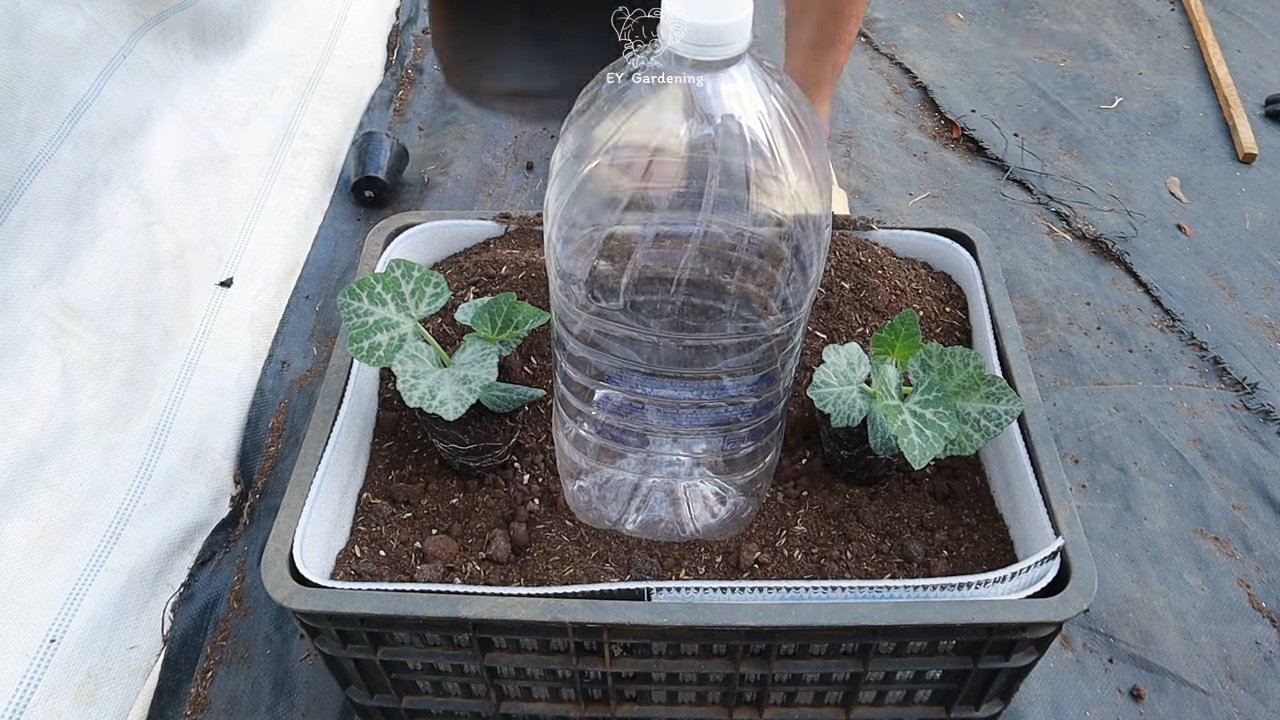
Conclusion
So, there you have it! Transforming ordinary pumpkin baskets into self-watering wonders with our DIY drip irrigation system is not just a fun project; it’s a game-changer for your autumn decor and plant health. Forget the daily watering routine and embrace the ease and efficiency of this simple, yet effective, technique.
Why is this a must-try? Because it solves a common problem: keeping your beautiful pumpkin baskets consistently hydrated, especially during those unpredictable fall weather patterns. No more wilting flowers or stressed foliage! This DIY approach is also incredibly cost-effective. Instead of investing in expensive self-watering planters, you can repurpose readily available materials and create a system tailored to your specific needs. Plus, it’s a fantastic way to reduce water waste by delivering moisture directly to the roots, minimizing evaporation and runoff.
But the benefits don’t stop there. This project is endlessly customizable. Feel free to experiment with different types of tubing, emitters, and even nutrient solutions to optimize the system for your particular plants. Consider adding a timer to automate the watering process even further, ensuring your pumpkin baskets receive the perfect amount of hydration, even when you’re away. You could also explore using a larger reservoir for extended watering periods. Think about incorporating decorative elements to conceal the tubing and reservoir, blending the functional aspect with the aesthetic appeal of your fall display. For instance, camouflage the tubing with faux vines or tuck the reservoir behind a bale of hay.
This DIY drip irrigation for pumpkin baskets is a win-win: healthier plants and less work for you.
We’ve shown you how to create a basic system, but the possibilities are truly endless. Don’t be afraid to get creative and adapt the design to suit your unique style and gardening needs. Whether you’re a seasoned gardener or a complete beginner, this project is accessible and rewarding.
Now, it’s your turn! Gather your materials, follow our simple steps, and experience the joy of effortlessly beautiful pumpkin baskets. We’re confident that you’ll be amazed by the results.
We can’t wait to see your creations! Share your photos and experiences with us on social media using #DIYSelfWateringPumpkins. Let us know what variations you tried, what challenges you encountered, and what tips you have for fellow DIY enthusiasts. Your feedback is invaluable and helps us continue to improve and inspire others. So, go ahead, give it a try, and let’s make this fall the most vibrant and effortless one yet!
Frequently Asked Questions (FAQ)
What exactly is DIY drip irrigation, and why is it beneficial for pumpkin baskets?
DIY drip irrigation is a method of delivering water directly to the roots of plants using a network of tubing and emitters. For pumpkin baskets, this is incredibly beneficial because it provides consistent and targeted hydration, preventing overwatering and underwatering. Unlike traditional watering methods, drip irrigation minimizes water waste by reducing evaporation and runoff. This leads to healthier, more vibrant plants and a more sustainable gardening practice. It also saves you time and effort, as you don’t have to water your pumpkin baskets as frequently.
What materials do I need to build a DIY drip irrigation system for my pumpkin baskets?
The basic materials you’ll need include:
* A water reservoir (a bucket, container, or even a repurposed plastic bottle).
* Drip irrigation tubing (available at most garden centers).
* Drip irrigation emitters (choose the appropriate flow rate for your plants).
* Connectors and fittings (to connect the tubing and emitters).
* A drill or awl (to create holes for the emitters).
* Scissors or a utility knife (to cut the tubing).
* Optional: A timer (to automate the watering process).
* Optional: Landscape staples (to secure the tubing in place).
How do I determine the correct flow rate for the emitters?
The ideal flow rate depends on the size of your pumpkin basket, the type of plants you’re growing, and the climate you live in. As a general rule, smaller baskets and plants require lower flow rates (e.g., 0.5 gallons per hour), while larger baskets and plants may need higher flow rates (e.g., 1 or 2 gallons per hour). Observe your plants closely after installing the system. If the soil is consistently soggy, reduce the flow rate. If the plants are wilting, increase the flow rate. It’s always best to start with a lower flow rate and adjust as needed.
How often should I refill the water reservoir?
The frequency of refilling the reservoir depends on its size, the flow rate of the emitters, and the weather conditions. Check the reservoir regularly, especially during hot or dry periods. A good starting point is to check it every few days and adjust the frequency based on your observations. Using a larger reservoir will, of course, extend the time between refills.
Can I use this system for other types of planters besides pumpkin baskets?
Absolutely! The principles of DIY drip irrigation are applicable to a wide range of planters, including hanging baskets, window boxes, raised beds, and even individual potted plants. You may need to adjust the tubing length, emitter placement, and flow rate to suit the specific needs of each planter.
What if my plants are getting too much or too little water?
If your plants are getting too much water, the soil will be consistently soggy, and the leaves may turn yellow. In this case, reduce the flow rate of the emitters or shorten the watering duration if you’re using a timer. If your plants are not getting enough water, the soil will be dry, and the leaves may wilt. Increase the flow rate of the emitters or lengthen the watering duration. Also, ensure that the emitters are properly positioned to deliver water directly to the root zone.
How do I prevent the tubing from getting clogged?
To prevent clogging, use clean water in the reservoir and consider installing a filter at the inlet of the tubing. Regularly flush the system by disconnecting the emitters and running water through the tubing to remove any debris. You can also use a small brush or needle to clean the emitters if they become clogged.
Can I add fertilizer to the water reservoir?
Yes, you can add water-soluble fertilizer to the reservoir to provide your plants with essential nutrients. Be sure to follow the instructions on the fertilizer packaging and use a diluted solution to avoid burning the roots. It’s generally recommended to use a balanced fertilizer specifically formulated for the type of plants you’re growing.
Is this DIY drip irrigation system environmentally friendly?
Yes, DIY drip irrigation is a very environmentally friendly watering method. It reduces water waste by delivering water directly to the roots, minimizing evaporation and runoff. This conserves water resources and reduces the risk of soil erosion. By using repurposed materials for the reservoir and tubing, you can further reduce your environmental impact.
What if I don’t have access to drip irrigation tubing and emitters? Are there any alternatives?
While drip irrigation tubing and emitters are the most efficient option, you can explore alternatives such as soaker hoses or even create your own makeshift emitters using small-diameter tubing and pinholes. However, these alternatives may not be as precise or efficient as dedicated drip irrigation components. You can also use self-watering spikes that attach to plastic bottles, though these may not be suitable for larger pumpkin baskets.

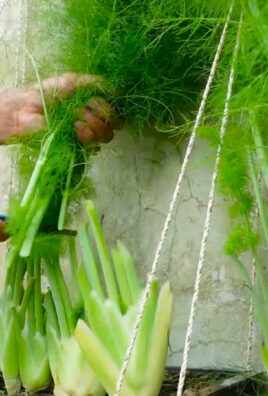
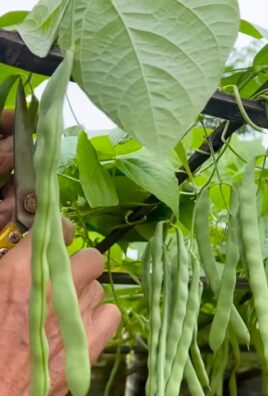
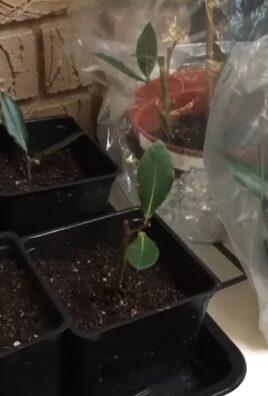
Leave a Comment